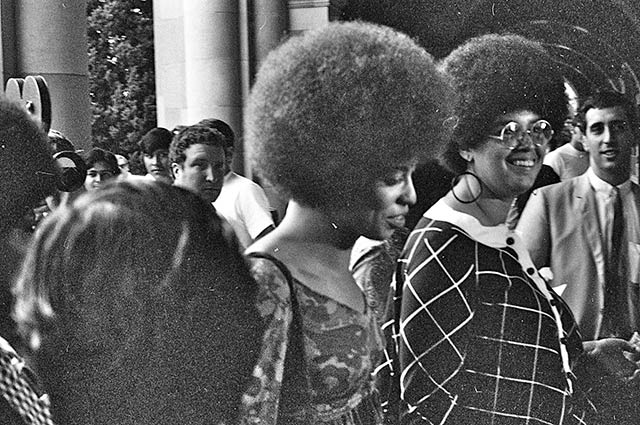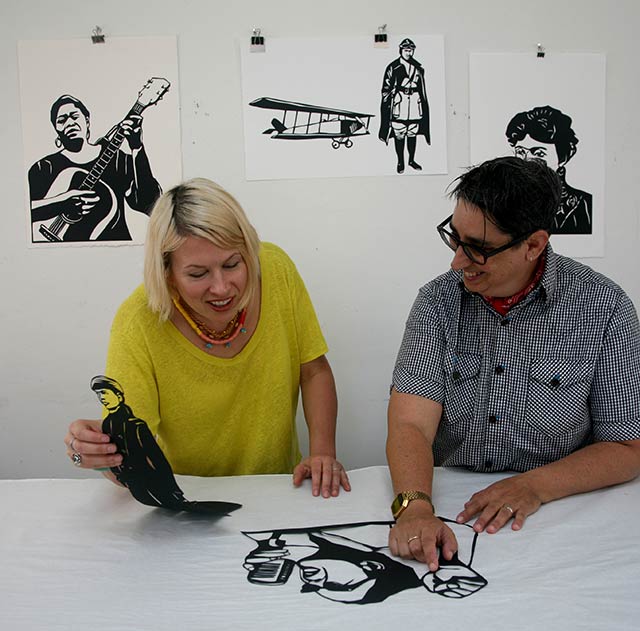
Part of the Series
Progressive Picks
The following is an interview with Kate Schatz, author of Rad American Women A-Z.
Mark Karlin: You are an educator. What does it mean to young women (and young men) to have female advocates who have often been overlooked in US history curriculums added to the historical narrative of our nation?
Kate Schatz: It means the world – literally. It means a visibility and thus validation of self and possibility, especially for young people of color, whose histories, faces and voices are routinely erased in historical narratives.
The book is entitled Rad American Women A-Z. Can you define “radical” as you do in the book’s introduction?
Radical has multiple meanings, all of which are connected. It can mean rad, as in cool, awesome, badass. Getting rad on a skateboard, at a punk show, with your friends. Standing out and being your own cool person. On that note, it also means doing something totally different from the norm – breaking new ground, standing up for what you believe, defying expectations. And it also refers to the root – the root of a problem, the root of an idea, the root of change. And if we root young people – especially young women – in confidence, strength, love and a sense of justice – well, that’s how we cultivate and grow a better world.
There are 26 women profiled in the book. How did you choose them?
It was a beautiful and impossible challenge; these women are by no means a definitive list of excellence or importance. They’re a jumping-off point, a starting point for conversations and investigations. I reached out to almost 100 friends and asked who they’d like to see in an A-Z book of American women. I took their responses, combined them with my own ideas, and then let books, essays, articles, films and the internet guide me. I went down hundreds of historical rabbit holes, learning about women I’d never heard of, and learning more about women I thought I knew. In the end, we managed to narrow it down to 26 – being constrained by the letters of the alphabet helped.
Perhaps, as examples, you can give a brief background to a couple of the women who made positive change in the history of the United States. How about Lucy Parsons?
When students learn US history, they often learn about “the Haymarket Riots” – it’s one of those signature events that might get covered for the AP test. But rarely do they learn about the radical, pro-labor, anarchist underpinnings of the event, and almost never do they learn about Lucy Parsons, the wife of Albert Parsons. When Albert was jailed for the Haymarket bombing, it was his wife Lucy who traveled the country, speaking out in support of him and his comrades. She was a mixed-race organizer, leader, dressmaker, mother and total badass who shaped the labor movement in Chicago, and who persevered after Albert was executed, and after their children died.
And Kate Bornstein?
Author, playwright, gender outlaw, trans elder who has been at the forefront of the trans movement for years. She’s known as “Auntie Kate” in the queer community and her books, like My Gender Workbook, have been breaking down and communicating the realities of trans lives for many years.
You have an entry called “X.” Can you explain what “X” stands for?
X is for the women whose names we don’t know – all who have come before us, whose stories will remain unheard, unsung, unknown. But it’s also for the future, for all the young people reading this book, who can envision being the next Patti Smith or Dolores Huerta or Rachel Carson.
You suggest 26 things that women can do “to be rad.” What are some of your favorites?
Act as an ally in support of all people! If we can teach children that one thing – what it means to be an ally, to stand up for and in solidarity with their friends and neighbors and classmates – then we’re good. I’m also partial to “Dare to be the only one. Only girl on the team? Only boy wearing pink? Cool!” because it makes it clear that this list – and the book! – are not just for girls. As the parent of a boy and a girl, this is especially important to me.
Can you offer some background into the #WeNeedDiverseBooks campaign?
The best way to learn about it is to visit the website and see all the incredible resources that they offer for teachers, booksellers, publishers, parents and more. Follow the founders on Twitter, use the hashtag #WeNeedDiverseBooks (or #WNDB), participate in their Twitter chats, follow them on Instagram. Read about all that they’re doing, and then ask your local library and indie bookseller if they know about them. And then look at your own bookshelves or your children’s or your classroom. What voices and stories are being represented? How can you expand to include diverse stories? Readers can also find out more at Twitter @RadWomenAtoZ.
Are there one or two characteristics that you believe are common to all the women in the book?
They all took risks, and they all acted with love.
 Kate Schatz (L), author of Rad American Women A-Z, discusses artwork with the book’s illustrator Miriam Klein Stahl (R). (Photo: City Lights Books)
Kate Schatz (L), author of Rad American Women A-Z, discusses artwork with the book’s illustrator Miriam Klein Stahl (R). (Photo: City Lights Books)
How did you work with your illustrator, Miriam Klein Stahl? The images of the women are so vibrant and expressive.
Miriam is a wildly talented and committed activist and artist and we have a fantastic creative partnership. I work to bring the women’s stories to life through words, and she works to do it through her paper cuts.
Join us in defending the truth before it’s too late
The future of independent journalism is uncertain, and the consequences of losing it are too grave to ignore. To ensure Truthout remains safe, strong, and free, we need to raise $31,000 in the next 48 hours. Every dollar raised goes directly toward the costs of producing news you can trust.
Please give what you can — because by supporting us with a tax-deductible donation, you’re not just preserving a source of news, you’re helping to safeguard what’s left of our democracy.